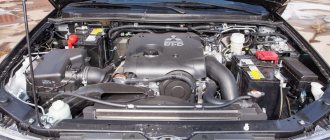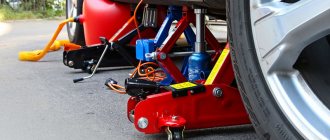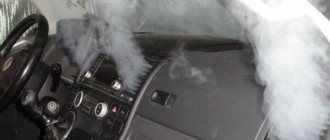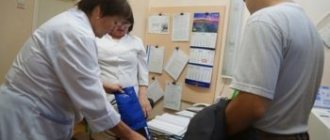I welcome you to the pages of our blog. A car is no longer a luxury. This is a vehicle where you can ride in comfort. But, no matter how strange it may sound, in addition to convenience, this also brings additional health problems. Let's talk about what dangers may lie in wait for drivers (especially professional ones), and how to deal with them?
What diseases are common among drivers?
The car, for many, has become an integral part, including in work. For truckers, taxi drivers, bus and minibus drivers, life without a car is simply impossible. These people are driving around the clock.
And such a sedentary mode creates conditions for occupational diseases among drivers. So what awaits motorists?
What prevents you from staying healthy?
First of all, this is the lack of a daily routine. The body has a biological clock, and the operation of many of its systems is geared to 24-hour changes. That is, at night the body brings all systems into a calm state in order to sleep; before lunch, on the contrary, pressure rises, pulse quickens and performance increases. This is only a small part of the changes that occur in the body during the day. Therefore, if you follow a daily routine, it works optimally. When today you sleep at 11 pm, and tomorrow you have a heavy dinner at this time, it is difficult for the body to cope with such different tasks equally well. In particular, this can be reflected in the accumulation of fatty tissue.
Drivers spend a lot of time driving without getting up. Lack of physical activity affects weight, heart and vascular health. Hemorrhoids also often develop, and a visit to the doctor is usually postponed again and again, and in the meantime the condition only worsens and it can be difficult to cope with the problem. Although in the early stages hemorrhoids can be cured quite simply and painlessly
With such a daily routine, it is very difficult to provide yourself with healthy nutrition, especially considering that you may only have the opportunity to eat once per day. In such conditions there is no need to talk about a balanced diet.
A common consequence of this lifestyle is obesity. It contributes to the development of hypertension, type 2 diabetes, heart disease, back and joint diseases, stroke, cancer, and often obstructive sleep apnea (when breathing occurs during sleep).
How to sit correctly
The body position should be straight, the back of the seat acts as a support for the spine. Then the pressure on the intervertebral discs will be uniform. If the design of the chair does not provide for this, get yourself a small flat pillow that you will place under your lower back. Make it a rule to stop every 2-3 hours and get out of the cab - move a little, inspect the car. There are several exercises you can do in the parking lot.
A few words about special orthopedic pillows for the back: such a pillow reduces the adverse effects of vibration on the spine, which is forced to maintain a fixed posture for a long time. The right comfort pillow conforms to the shape of your lower back, providing good support for your spine. It helps maintain correct posture, reduce pressure on the lumbar spine and prevent diseases caused by a “sitting” position.
Drowsiness while driving
Due to a disrupted daily routine and heavy workload, it is often not possible to sleep properly: the schedule is tight, insomnia is tormenting, or sleep is not of sufficient quality. In the latter case, the culprit may be obstructive sleep apnea.
If you need to take turns driving with a partner, this can also disturb your sleep. For example, because you don’t trust the other driver, or because it’s hard to sleep when the car is moving, or because it constantly stops. All this leads to daytime sleepiness (and an increased risk of accidents). Over time, fatigue is perceived as normal, and the person no longer understands the degree of danger. In addition, lack of sleep is associated with less efficient use of the primary energy source, glucose, as well as abnormal levels of cortisol (the stress hormone).
A complete list of diseases that prevent you from driving in 2020
Copied 06/26/2020 23:42:17 from the page https://ftimes.ru/309048-pri-kakix-zabolevaniyax-po-novomu-zakonu-nelzya-upravlyat-avtomobilem-v-2020-godu.html - Mozilla/5.0 (Windows NT 6.3; Win64; x64) AppleWebKit/537.36 (KHTML, like Gecko) Chrome/81.0.4044.122 Safari/537.36 [2a01:4f8:210:5333::2]
The list of diseases with which you cannot obtain a driver's license contains the following items:
I. Mental disorders and behavioral disorders (in the presence of chronic and protracted mental disorders with severe persistent or frequently exacerbating painful manifestations)
1. Organic, including symptomatic, mental disorders 2. Schizophrenia, schizotypal and delusional disorders 3. Mood disorders (affective disorders) 4. Neurotic, stress-related and somatoform disorders 5. Personality and behavioral disorders in adulthood 6. Mental retardation
II. Mental disorders and behavioral disorders associated with the use of psychoactive substances (until the termination of dispensary observation due to stable remission (recovery)
7. Mental and behavioral disorders associated with psychoactive substance use
III. Diseases of the nervous system 8. Epilepsy
IV. Diseases of the eye and its adnexa 9. Achromatopsia 10. Blindness of both eyes
Driver injuries and stress
The driver's job is also dangerous for obvious reasons. If the driver is involved in unloading, this carries additional risks. Especially if you do it in the wrong position. Exhaust gases can also be harmful to your health. When transporting liquid concrete, drivers are exposed to chromium and alkali, which can cause both an allergic skin reaction and chemical burns. Drivers transporting gasoline often suffer from headaches, dizziness and nausea due to fuel vapors. Exhaust fumes have been linked to lung cancer and various forms of allergic inflammation.
Chronic stress, unlike acute stress, is harmful to health and has a negative effect on the functioning of the cardiovascular system. It often occurs among drivers - due to long working hours, separation from loved ones, difficulties on the road and the requirement to follow a strict schedule, despite the fact that you can always get stuck in a traffic jam.
Any of these factors can lead to loss of ability to work and loss of your driver's license.
Article
Relevance of the problem.
Under the influence of a complex of factors of varying intensity, drivers of motor vehicles develop occupational and work-related diseases.
Target.
Conduct an analysis of literature data on harmful factors affecting the health of drivers.
Research objectives.
To identify groups of occupational and work-related diseases that develop in drivers and to clarify the role of factors involved in their formation.
Materials and methods.
Study and analysis of literature data on the health status of drivers of modern motor transport.
Results.
According to statistics, it is noted that 42.3% of workers (almost 30 million people) work in harmful and difficult conditions, which includes the majority of drivers. The number of samples taken at workplaces in which quantitative indicators of harmful production factors exceed permissible standards ranges from 20-40%. Specific reasons leading to the development of occupational pathology include wear and tear of equipment and obsolescence of technology, insufficient quantities of personal and collective protective equipment, lack of regulatory information, massive violations of technological discipline, low level of production culture and training of workers, decreased control over compliance with sanitary standards and others. labor safety standards, non-compliance with work and rest schedules, neglect of one’s own health, spread of bad habits (alcoholism, smoking, drug addiction). It should be emphasized that the listed reasons are largely determined by the generally low medical and hygienic culture of Russian workers in the transport industry. The works of a number of authors have established that occupational and professionally caused diseases are directly related to unfavorable working conditions and are quite common among workers in the transport industry, determining not only their level of performance, but also their state of health, as well as the duration of creative longevity.
Occupational and work-related diseases of drivers are conventionally divided into 5 groups.
1. Diseases associated with prolonged exposure to stress. The nervous system is constantly under tension, which causes diseases of the neuropsychic sphere and cardiovascular pathology. Drivers often develop arrhythmias, cardialgia, hypertension, and myocardial infarction.
2. Diseases caused by prolonged sitting. Such diseases include osteoarthrosis, osteochondrosis, spondyloarthrosis, spondylolisthesis (non-union of the vertebral arch), radiculitis, herniated vertebral discs, habitual dislocations, cervicobrachial plexitis, vibration disease, prostatitis, hemorrhoids. 3. Diseases associated with inadequate and irregular nutrition during working hours. These include gastritis, peptic ulcer, cholecystitis, colitis, pancreatitis, dysbacteriosis. 4. Diseases caused by a sedentary lifestyle and metabolic disorders. These are diabetes and obesity.
5. Allergic and oncological diseases. These include bronchial asthma (exhaust fumes, diesel fuel, gasoline, lubricating oils), cancer of the lung and larynx (asbestos is used in the manufacture of brake pads; when a car is braked, a temperature increase occurs on the brake pads, reaching eight hundred degrees Celsius, with the simultaneous release phenol).
These diseases concern professional drivers, not amateurs.
It is known that the driver’s working conditions are determined by neuropsychic overloads that arise due to the large amount and variety of information (traffic lights, road quality, unexpected obstacles) coming from the street and from the cabin instruments. Seeing, hearing, feeling, understanding 3-4 important signals in 1 minute, more than 200 in 1 hour, over 1600 in an 8-hour work shift and quickly making a decision is the basis for great neuropsychic overload for people in this profession. To this is added responsibility for your life and the people in the car, for the cargo being transported, as well as sometimes working on the night shift. Unfavorable work operations for the driver of urban transport, leading to especially high neuropsychic overloads, are sudden braking, overtaking, driving through an uncontrolled intersection, integrating into and leaving traffic flow, and for drivers of construction, road and other equipment - working on slopes, joint work with other vehicles. For 3% of drivers, the cause of disability is neuropsychiatric diseases. About 40% of them become disabled due to cardiovascular pathology before the age of 50 years. Clinicians have found that work-related diseases among drivers are led by arterial hypertension, which occurs as a result of neuropsychic overload. In our country, 18-20% of people in this cohort suffer from it (and still continue to work). About 1/3 of all diseases with temporary disability and half of the causes of disability in car drivers are caused by coronary heart disease. Relatively often, the onset of arterial hypertension is associated with so-called reactive states that occur in drivers after a traffic accident.
Hygienists have proven that an important harmful production factor is physical activity that affects the neck-shoulder joints and ligaments due to frequent turns of the head (90-150 times in 1 hour) by 50-130° (towards the rear view mirrors, doors, passengers). The frequency of pressing the pedals with your feet, accessing levers, steering wheels, a forced posture (sitting) for a long time - all this creates great physical stress of a general and local nature. One of the most common metabolic diseases of the skeletal system caused by exposure to general, local or combined vibration is osteoporosis. A functional restructuring of bone tissue is revealed, which manifests itself in changes in bone beams, changes in the relief of articular surfaces, the appearance of zones of osteosclerosis, increased tuberosity at the sites of muscle attachment, and changes in the direction of bone beams. When decompensation occurs, pathological changes develop in the form of cysts (due to the development of a dystrophic process due to injury or vasospasm, leading to the appearance of foci of ischemia), enostosis (due to excess production of osteoblasts), and osteoarthrosis. Often, bone dystrophic changes occur long before the clinical appearance of occupational pathology. A number of publications contain information that constant harmful factors affecting the driver are also vibration and noise that exceed permissible sanitary standards, as well as infrasonic vibrations, air pollution with carbon monoxide (carbon monoxide), nitrogen oxides, sulfur oxides, gasoline, hydrocarbons , carcinogenic and other products, dust, low or high air temperature, insufficient lighting. Given the impact of these unfavorable working conditions, it is not uncommon for drivers to leave their profession starting at about 45 years of age, that is, even before retirement age. Many studies have revealed that drivers suffer from such occupational diseases as carbon monoxide poisoning, leaded gasoline poisoning, vibration disease, toxic dust bronchitis, sensorineural hearing loss, diseases of the musculoskeletal system and peripheral nervous system. Acute poisoning from exhaust gases (mainly carbon monoxide) is possible, which is observed even in central Russia during the hot season when the engine is not regulated; gasoline pneumonia from gasoline entering the lungs when it is sucked through a hose. Due to working in a forced position, drivers experience stagnation of venous blood in the lower part of the body and a predisposition to hemorrhoids and varicose veins of the lower extremities. It should be noted that the most common disease in this group is prostatitis, the main cause of which is stagnation of blood circulation in the pelvis due to an uncomfortable sitting position while driving. Frequent urinary retention due to non-stop driving can cause bladder and urinary tract cancer. Insufficiently favorable working conditions for drivers cause pathologies of the respiratory system (up to 50% of all diseases), gastrointestinal tract, peripheral nervous system, female genital area (6-7%), metabolic disorders, allergic and oncological diseases. Motor vehicle drivers are a group at increased risk for cancer of the stomach, larynx, lung, as well as kidney and bladder cancer.
Conclusions.
The analysis of literature data made it possible to assess the negative impact of harmful factors on the health of drivers that can cause the development of occupational and occupationally-related diseases in them, which requires further prevention and rehabilitation of people in this profession.
What can you do for your health?
Food
Try to eat small portions. The Mediterranean approach to nutrition is considered the healthiest. Food should contain a minimum amount of fatty meat and sweets. Instead of cola or juices (which contain a lot of sugar), it is better to drink water. The basis of the diet consists of fruits, vegetables, grains, beans, nuts and olive oil. You also need to eat sea fish and seafood at least twice a week. Meat, butter, margarine, fried foods are all sources of harmful fats, which cause the formation of atherosclerotic plaques. They lead to strokes and heart attacks.
Sport
To avoid gaining weight, you need to expend as much energy as you receive. To reset, you need to spend even more. Therefore, to prevent and combat obesity, it is very important to be physically active. Of course, on a long-distance flight this is difficult. But it is very useful to warm up a little during short stops. And full-fledged training can be done at home.
Rest
Sleep and rest are no less important than proper diet and physical activity. For example, in the European Union, drivers are prohibited from driving for more than 9 hours a day, and every 4.5 hours they must take a 45-minute break. This mode is considered safe.
Normally, you need to sleep 7-9 hours a day, but studies show that truck drivers typically sleep no more than 4-5 hours a day while on the road. If this cannot be avoided, then at least the sleeping conditions should be as good as possible:
- It is better to choose a parking lot away from the road, and if it is still noisy, use earplugs.
- You need to close the curtains tightly or use a sleep mask.
- The mattress and pillow should be comfortable.
- If you don't have a mattress and only have a sleeping bag, you can use a mattress pad.
- Ask loved ones, employers and dispatchers not to disturb you unless absolutely necessary while you sleep.
If you have trouble falling asleep...
When a person goes to bed at different times, it is often difficult for him to fall asleep. To cope with this, you can use the same rituals every time: brush your teeth, wash your face, change your clothes. This is a signal to the brain that you need to fall asleep now. Insomnia can be caused by excessive caffeine consumption. In a good way, you can’t drink coffee after lunch. Drinking alcohol before bed is also not a good idea: it makes your sleep less quality.
In extreme cases (when it’s not the first night you’ve been tossing and turning for half an hour, or even more), you can resort to sleeping pills. Of the over-the-counter drugs, the best studied are first-generation antihistamines. They were previously taken for allergies, but they caused drowsiness. Now this side effect has become beneficial. However, antihistamines become addictive. In addition, they can have a long-lasting effect, and drowsiness will remain after waking up. Prescription sleeping pills should only be prescribed by a doctor, who will also explain how to take them so as not to become dependent on them. But there is such a possibility.
You can combat daytime sleepiness with coffee (the main thing is not to overdo it), as well as with short sleep breaks. But they should not be less than 20–30 minutes, otherwise you will want to sleep even more. It is important to remember that most accidents due to drowsiness occur between midnight and 6 am, and it is, of course, better to do everything possible to avoid being on the road during this time.
Of course, sleep is important, but if you only have the opportunity to lie down and relax, it’s better to take advantage of it.
Effect on the organs of vision
With driving experience, other problems come - visual acuity decreases. The presence of a tint film has a negative effect; it is only allowed on top, its width is 15 cm. This application is designed to protect the eyes from ultraviolet radiation. The film should be selected in a brown or green shade, as they provide natural color rendition.
The paradox is that the driver cares about his vehicle much more than about his own health, and then does not understand where the sores come from. To avoid the above, exercise, eat healthy, and remember to relax outdoors during your free time.
Preventive medical examination of drivers
Unfortunately, despite all the dangers of the profession, few drivers reach the doctor on time. A predictable schedule does not always make it difficult to schedule a visit to the doctor. But, as cliché as it may sound, health should be the most important thing. And drivers have many occupational diseases that will not allow them to continue working in the future. However, the vast majority of these diseases are preventable.
You should definitely go to the doctor if you experience any disturbing symptoms, and also undergo a preventive examination every year. For example, often high blood pressure does not make itself felt and is detected only when measured with a tonometer. Meanwhile, if it is not controlled, it poses a great threat to health: it increases the risk of stroke and heart attack.
Effect on the digestive organs
The above reasons negatively affect the digestive organs and intestinal motor function. If its walls are no longer so elastic, then they cannot contract with the same frequency, useful substances do not immediately enter the blood, and as a result, diarrhea. Snacking on the run affects the accumulation of toxic substances in the body, mucous membranes become irritated. Immediate treatment is required, otherwise the formation of polyps is possible. Eating fruits, vegetables and herbs, and boiled poultry has a positive effect on restoring health.
About the reproductive system
Men are especially prone to diseases of the reproductive system. Lack of blood movement in the pelvis can lead to infertility and impotence. The prostate gland does not receive enough nutrition and it begins to malfunction. The production of hormones is inhibited, the prostate may increase in size, and urination may become sluggish. Prevention is still the same gymnastics that can protect against such unpleasant and complex problems. A static position for a long time leads to heating of the testicles and sperm may lose viability forever.
When is driving contraindicated?
After myocardial infarction, coronary artery bypass surgery, transient ischemic attack, or stabilization of unstable angina, you should refrain from driving for a month.
If there was an arrhythmia with fainting, then after this episode 3 months should pass without repeated loss of consciousness. For the same period, it is necessary to stop driving if a stroke occurred (and then it was possible to restore functions) or several transient ischemic attacks occurred.
Installation of an implantable cardioverter defibrillator or resuscitation for sustained ventricular tachycardia or ventricular fibrillation results in a six-month driving ban.
If you have diabetes, you are at risk of developing hypoglycemia (blood sugar levels that are too low). In this case, the person may lose consciousness. If such a condition occurs without early warning signs, then you can drive only after 3 months without such episodes. Or after reliable measures have been taken to control blood sugar levels. Uncontrolled diabetes can also cause loss of sensation in the limbs, problems with vision, and an impact on the ability to drive.
That is why you need to pay attention to your health even when there seems to be no time for it.











